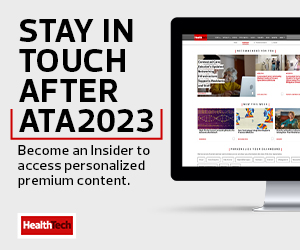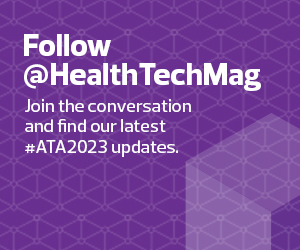HEALTHTECH: You stepped into the role of chief strategy and digital officer last year. How is it going so far? What are your top three priorities for this year?
VAEZY: Last year was a really challenging time for health systems, so I’ve been focused on taking those challenges head-on and really assessing what they mean for the future of healthcare. While the first year has been challenging, in some ways, it has also been an exciting time, because we’re breaking free from the aspects that were keeping the industry inert and resistant to change.
First, as a system, we’re now acknowledging and fully embracing that the environment from a care delivery standpoint is going to continue to become more decentralized, more fragmented. The pace at which new entrants are coming into the market will continue to increase – or at least remain where it is. We are also constrained by the financial challenges, especially the workforce challenges of the past several years, especially last year, so we can’t do it all. Our real opportunity is to create connectivity across that environment. So, that’s one of our first big priorities: Don’t focus on owning it all, but focus on connecting it all.
For our second priority, there are a lot of other functions that make health systems work — support services, analytics, information systems, supply chain, agency contracting — all sorts of nonclinical things that we’re doing individually, and there's no need for that. There is a huge opportunity for nonclinical collaboration across health systems to support us in lowering costs. So, the second priority is nonclinical collaboration.
The third area is how we connect the healthcare experience — physical and digital — and the underlying data to translate into a patient experience, a consumer experience that is integrated. We’re really focused on what we call identity-driven engagement, so we all get different experiences based on who we are. It’s analogous to shopping on Amazon; for example, your homepage looks different from mine because you’ve bought different things and it’s personalized to you. That makes it relevant to your needs, what you’re in the market for. Healthcare can take some lessons away from that as well.
EXPLORE RESOURCES: Realize the power of virtual care with expert insights.
HEALTHTECH: What are some takeaways from ATA2023 that have inspired you or that you might bring back to discuss with your team at Providence?
VAEZY: Discussions around the value of digitally enabled care being an extender of the systems supporting capacity building, potentially alleviating workforce challenges, making better customer experiences. I think folks are finally getting this – and getting away from a lot of the doubts and overthinking. Questions will always exist, but the alternative is that someone might not get care at all.
We have to reshape how we think about telehealth, and I think folks are getting there. It’s not telehealth or a physical visit. They exist as part of an operating environment that is hybrid. It’s not just one or the other, or swapping one visit out for another. It’s a model of care that’s multimodal, that’s hybrid in nature.
I heard less about payment parity than I have. Payment parity really took off during the public health emergency, when we just needed folks to deliver care online because there wasn't physical capacity, clinics were shut down, and we were trying to manage through those dynamics that we weren't familiar with. But on an ongoing basis, payment parity doesn’t take full advantage of the value of bringing technology into an industry. Generally speaking, prices should go down, costs should go down. Initially, we wanted to drive adoption because we needed to, and now we’re evolving past that.














